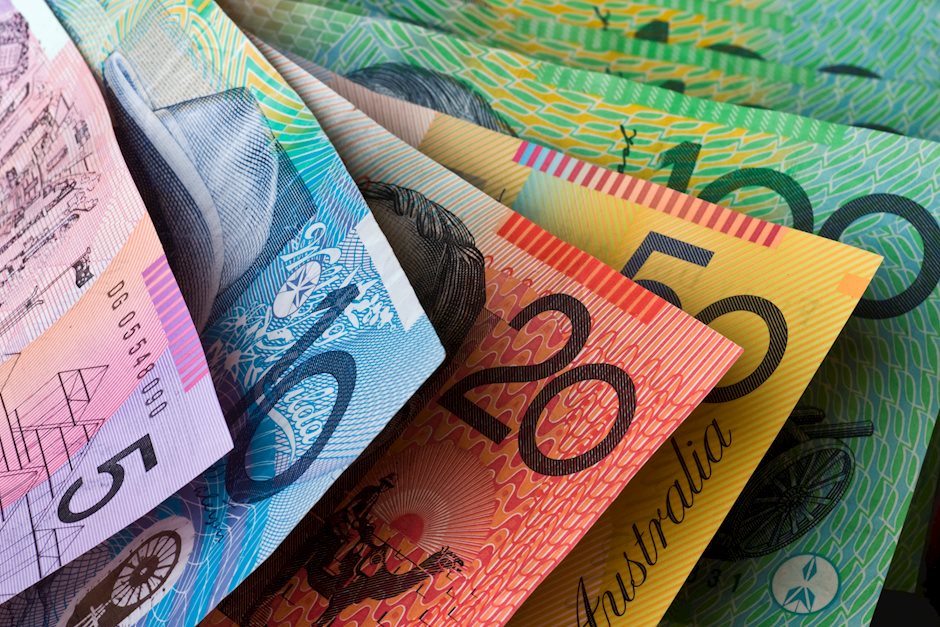AUD/USD rises to near 0.6800 despite multiple headwinds, US PCE inflation eyed
- AUD/USD moves higher to near 0.6800 despite flat Aussie Retail Sales data for July.
- The RBA is unlikely to pivot to policy normalization this year.
- Investors await the US core PCE inflation for July and Caixin Manufacturing PMI for August.

The AUD/USD pair gains to near 0.6800 in Friday’s European session. The Aussie asset rises as the Australian Dollar (AUD) remains firm even though the Australian Retail Sales were reported flat in July in Asian trading hours, and China’s Manufacturing PMI is expected to have contracted consecutively for the second month in August.
The Australian Bureau of Statistics reported on early Friday that there was no growth in Retail Sales in July, while economists forecasted them to rise at a slower pace of 0.3% from 0.5% in June. Flat Retail Sales appear to be the outcome of the lower spending power of households due to high inflation and the restrictive monetary policy stance of the Reserve Bank of Australia (RBA).
Despite a slowdown in Australian consumer spending, the RBA is unlikely to cut interest rates sooner as its battle against inflation appears to be much more fierce than what other nations are facing. Recent inflation data showed that the monthly Consumer Price Index (CPI) decelerated to 3.5% from 3.8% in June but remained higher than estimates of 3.4%. According to the market speculation, the RBA is expected to keep its Official Cash Rate (OCR) at 4.35% by the year.
Meanwhile, a Reuters poll showed on Friday that China’s factory PMI, which will be published on Monday, is expected to come in below 50.0. A level that separates growth mark from contraction. This would prompt the scale of monetary stimulus to uplift poor economic prospects. Being a proxy for China’s economic prospects, the Australian Dollar will be negatively influenced by weak data.
On the Unites States (US) front, investors await the Personal Consumption Expenditure Price Index (PCE) data for July, which will be published at 12:30 GMT. The report is expected to show that the annual core PCE inflation, which excludes volatile food and energy prices, rose at a higher pace of 2.7% from June’s reading of 2.6%, with monthly figures growing steadily by 0.2%. The inflation data will significantly influence market speculation for Fed interest rate cuts in September.
The Fed is widely anticipated to start reducing its borrowing rates in September but traders are divide over the likely rate-cut size.
Australian Dollar FAQs
One of the most significant factors for the Australian Dollar (AUD) is the level of interest rates set by the Reserve Bank of Australia (RBA). Because Australia is a resource-rich country another key driver is the price of its biggest export, Iron Ore. The health of the Chinese economy, its largest trading partner, is a factor, as well as inflation in Australia, its growth rate and Trade Balance. Market sentiment – whether investors are taking on more risky assets (risk-on) or seeking safe-havens (risk-off) – is also a factor, with risk-on positive for AUD.
The Reserve Bank of Australia (RBA) influences the Australian Dollar (AUD) by setting the level of interest rates that Australian banks can lend to each other. This influences the level of interest rates in the economy as a whole. The main goal of the RBA is to maintain a stable inflation rate of 2-3% by adjusting interest rates up or down. Relatively high interest rates compared to other major central banks support the AUD, and the opposite for relatively low. The RBA can also use quantitative easing and tightening to influence credit conditions, with the former AUD-negative and the latter AUD-positive.
China is Australia’s largest trading partner so the health of the Chinese economy is a major influence on the value of the Australian Dollar (AUD). When the Chinese economy is doing well it purchases more raw materials, goods and services from Australia, lifting demand for the AUD, and pushing up its value. The opposite is the case when the Chinese economy is not growing as fast as expected. Positive or negative surprises in Chinese growth data, therefore, often have a direct impact on the Australian Dollar and its pairs.
Iron Ore is Australia’s largest export, accounting for $118 billion a year according to data from 2021, with China as its primary destination. The price of Iron Ore, therefore, can be a driver of the Australian Dollar. Generally, if the price of Iron Ore rises, AUD also goes up, as aggregate demand for the currency increases. The opposite is the case if the price of Iron Ore falls. Higher Iron Ore prices also tend to result in a greater likelihood of a positive Trade Balance for Australia, which is also positive of the AUD.
The Trade Balance, which is the difference between what a country earns from its exports versus what it pays for its imports, is another factor that can influence the value of the Australian Dollar. If Australia produces highly sought after exports, then its currency will gain in value purely from the surplus demand created from foreign buyers seeking to purchase its exports versus what it spends to purchase imports. Therefore, a positive net Trade Balance strengthens the AUD, with the opposite effect if the Trade Balance is negative.
Author

Sagar Dua
FXStreet
Sagar Dua is associated with the financial markets from his college days. Along with pursuing post-graduation in Commerce in 2014, he started his markets training with chart analysis.
















